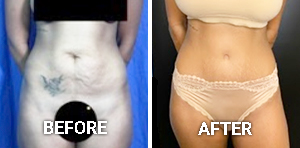Fat Transfer
Conveniently located to serve the areas of Beverly Hills and Greater Los Angeles

Fat transfer, also known as fat grafting or fat injection, is a procedure that transfers excess fat from areas such as the outer thighs and injects it into areas where you may lack volume, such as your hands, face, breasts, or buttocks. Fat transfers work well in treating sunken cheeks, facial lines, acne scars, and the other effects of aging. An advantage of fat grafts is since they are taken from the patient’s own body, it is less likely that the implants will be rejected.
To learn more about fat transfer, make an appointment online, or call us at 800-310-7000.
Contents
Before and After Photos
FAQ
Am I a candidate for a fat transfer?
Patients who may be looking to create proportion in their face/body or in reconstructive surgery may find this procedure helpful.
What does the fat transfer procedure involve?
Both the donor site (area from which fat is taken) and the recipient site (area to be treated) are anesthetized. A needle attached to a syringe is inserted onto the donor site in a location that has a thick layer of fat such as the lower stomach, thigh, or buttocks. Fat cells are aspirated into the syringe, purified, and then carefully re-injected into the recipient site. The process is repeated until the desired amount of fat has been transferred and the defect corrected. A pressure bandage is applied to the donor site and sometimes to the recipient site to prevent blood clots and swelling. It usually requires three fresh fat transfers for full correction. However, all the fat that is taken from the donor site is labeled and frozen and can be used for your additional treatments.
What is the length of this procedure?
Fat transfers generally take no more than 30 minutes to an hour.
How many treatments are required?
On average, about 3 fat transfer/fat injection treatments are required for a favorable result.
How long will results last?
The results are long-lasting usually for many years.
Will I experience pain during the procedure?
Anesthesia is used. There is no pain during the procedure. A certain degree of swelling and bruising is normal. Cold compresses, as well as head elevation when lying down, will enhance healing and relieve discomfort. Mild discomfort is usually easily controlled with medications prescribed by your surgeon.





